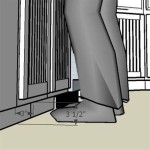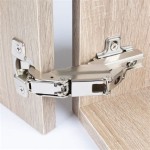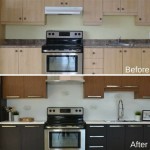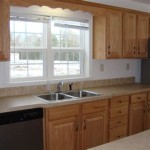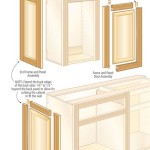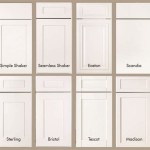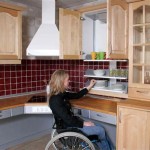Kitchen Cabinet Pictures With Knobs: A Comprehensive Guide
Kitchen cabinet hardware, often underestimated, plays a pivotal role in both the functionality and aesthetics of a kitchen. While the broad category encompasses pulls, handles, and latches, knobs represent a classic and versatile choice, suitable for a wide range of kitchen styles. This article will explore the diverse aesthetic considerations, practical aspects, and installation nuances associated with using knobs on kitchen cabinets, illustrated by examples and focusing on visual inspiration.
The visual impact of kitchen cabinet knobs extends beyond simple functionality. Knobs contribute significantly to the overall design narrative, influencing the perceived style, sophistication, and even the perceived quality of the cabinetry. Choosing the right style, finish, and size of knob is crucial for achieving a cohesive and visually appealing kitchen space. Pictures of kitchens with carefully selected knobs demonstrate the transformative potential of these small but significant details.
Selecting kitchen cabinet knobs involves careful consideration of several factors, including the overall kitchen design, the style of the cabinets, the desired level of visual prominence, and the practical needs of the user. A harmonious balance between these elements is essential for achieving a satisfying and functional outcome. The following sections will delve into these considerations in greater detail.
Aesthetic Considerations: Style, Finish, and Material
The aesthetic impact of kitchen cabinet knobs hinges largely on the chosen style, finish, and material. These elements must complement the existing design scheme to create a unified and visually appealing space. A mismatch can detract from the overall aesthetic and make the kitchen appear disjointed.
Style is a paramount consideration. Knobs are available in a multitude of styles, ranging from traditional and ornate to modern and minimalist. Traditional kitchens often benefit from knobs with intricate detailing, such as floral motifs or raised patterns. These knobs can enhance the classic charm of the cabinetry and contribute to a sense of timeless elegance. Common finishes for traditional knobs include antique brass, oil-rubbed bronze, and polished nickel. These finishes evoke a sense of history and sophistication, lending a warm and inviting ambiance to the kitchen.
Modern kitchens, on the other hand, typically benefit from knobs with clean lines and minimalist designs. Simple, geometric shapes and understated finishes, such as matte black, brushed stainless steel, or polished chrome, are commonly favored. These knobs contribute to a sleek and contemporary aesthetic, emphasizing the simplicity and functionality of the space. Glass or acrylic knobs can also be effective in modern kitchens, adding a touch of subtle glamour without overwhelming the overall design.
The finish of the knobs should coordinate with other hardware elements in the kitchen, such as the faucet, light fixtures, and appliance pulls. Maintaining a consistent finish throughout the space can create a sense of visual harmony and cohesion. Consider the material of the knobs as well. Metal knobs, particularly those made from brass or stainless steel, are durable and long-lasting. Ceramic or porcelain knobs can add a touch of color and personality to the kitchen, while wooden knobs can complement a rustic or farmhouse-style design.
The size of the knob is also an important consideration. Smaller knobs are often suitable for smaller cabinets and drawers, while larger knobs can make a bolder statement on larger cabinets. The size should be proportionate to the size of the cabinet door or drawer to avoid appearing too small or too large. Experimentation with different sizes can help determine the most visually appealing option.
Observing pictures of various kitchens with different knob styles, finishes, and materials can provide valuable insights and inspiration. These images can help visualize how different knob options can complement or contrast with existing design elements and inform the selection process.
Practical Considerations: Ergonomics and Placement
Beyond aesthetics, the practical aspects of kitchen cabinet knobs are equally important. The knobs should be comfortable to grip and easy to use, ensuring smooth and effortless operation of the cabinet doors and drawers. Ergonomics and placement play a vital role in achieving this level of functionality.
The shape and size of the knob should be comfortable for the user's hand. Knobs with smooth, rounded edges are generally more comfortable to grip than those with sharp angles. The size of the knob should also be appropriate for the size of the user's hand. Small knobs may be difficult to grip for individuals with larger hands, while excessively large knobs may feel unwieldy.
Knob placement is another critical consideration. The optimal placement of a knob depends on the style of the cabinet and the user's preferences. For upper cabinets, knobs are typically placed near the bottom corner of the door, on the opposite side of the hinges. This placement allows for easy opening and closing of the door. For lower cabinets and drawers, knobs are typically placed in the center of the door or drawer front. This placement provides a balanced and symmetrical look.
Consider the height of the users when determining the placement of knobs. If multiple users of varying heights will be accessing the cabinets, it may be necessary to adjust the knob placement to accommodate their needs. This is especially important for lower cabinets and drawers, where accessibility can be a concern for individuals with mobility limitations.
The material of the knob can also impact its practicality. Certain materials, such as slippery metals or smooth plastics, may be more difficult to grip than others. Textured knobs or those with a slightly grippy surface can provide a better grip and improve ease of use. Regularly cleaning the knobs is also important to maintain a good grip and prevent the buildup of dirt and grime.
Consider the frequency of use when deciding on knob placement and style. Cabinets and drawers that are frequently used should have knobs that are easily accessible and comfortable to grip. Less frequently used cabinets and drawers may be able to accommodate knobs that are more aesthetically focused, even if they are slightly less practical.
Installation and Maintenance: Ensuring Longevity and Functionality
Proper installation and regular maintenance are essential for ensuring the longevity and functionality of kitchen cabinet knobs. Correct installation prevents loose knobs and potential damage to the cabinetry, while regular maintenance helps keep the knobs looking their best and functioning smoothly.
Installation typically involves drilling a hole in the cabinet door or drawer front and then securing the knob with a screw. The size of the hole should match the size of the knob's screw post. It is important to use the correct size drill bit to avoid damaging the cabinet. Use a cabinet hardware jig for perfectly aligned holes, ensuring consistent placement across all cabinets. Prior to drilling, double-check measurements and markings to ensure accurate placement and prevent costly mistakes.
When tightening the screw, avoid overtightening, as this can damage the cabinet or strip the screw threads. A snug fit is sufficient to secure the knob in place. Regularly check the tightness of the screws and tighten them as needed to prevent the knobs from becoming loose. Using threadlocker can help keep the screws from loosening over time.
Maintenance involves cleaning the knobs regularly to remove dirt, grime, and fingerprints. The cleaning method depends on the material of the knobs. Metal knobs can be cleaned with a mild soap and water solution, while ceramic or porcelain knobs can be wiped with a damp cloth. Avoid using abrasive cleaners or harsh chemicals, as these can damage the finish of the knobs. Periodic polishing can help maintain the shine of metal knobs.
Address any signs of wear or damage promptly. If a knob becomes loose or damaged, replace it immediately to prevent further damage to the cabinetry. When replacing a knob, choose a replacement that matches the existing knobs in style and finish to maintain a cohesive look. It's a good idea to keep a few extra knobs on hand for replacements.
For knobs with moving parts, such as those with hinges or latches, regular lubrication may be necessary to ensure smooth operation. Use a silicone-based lubricant to prevent sticking or squeaking. Avoid using oil-based lubricants, as these can attract dust and grime.
By following these installation and maintenance tips, homeowners can ensure that their kitchen cabinet knobs remain functional and aesthetically pleasing for years to come. Taking proactive steps to care for kitchen cabinet hardware is a worthwhile investment that protects both the value and appearance of the kitchen.

How To Choose Between Knobs Or Pulls On Kitchen Cabinets

Ravinte 1 4 Inch Kitchen Cabinet Knobs Drawer Dresser Ma

Best Kitchen Cabinet Hardware 2024

62 Unique Kitchen Cabinet Hardware Ideas For Your Home Best Cabinets Handles

Cabinet Knobs Handles More

Satin Nickel Kitchen Cabinet Knobs Design Ideas

A Guide To Updating Your Kitchen Cabinet Hardware Bella Tucker

Best Kitchen Cabinet Hardware 2024

Victorian Cabinet Knobs Kitchen Cupboards Drawer Pull Knob

A Guide For Kitchen Cabinet Handles And Knobs Designcafe
Related Posts

